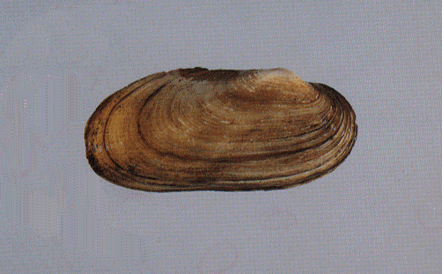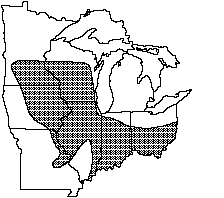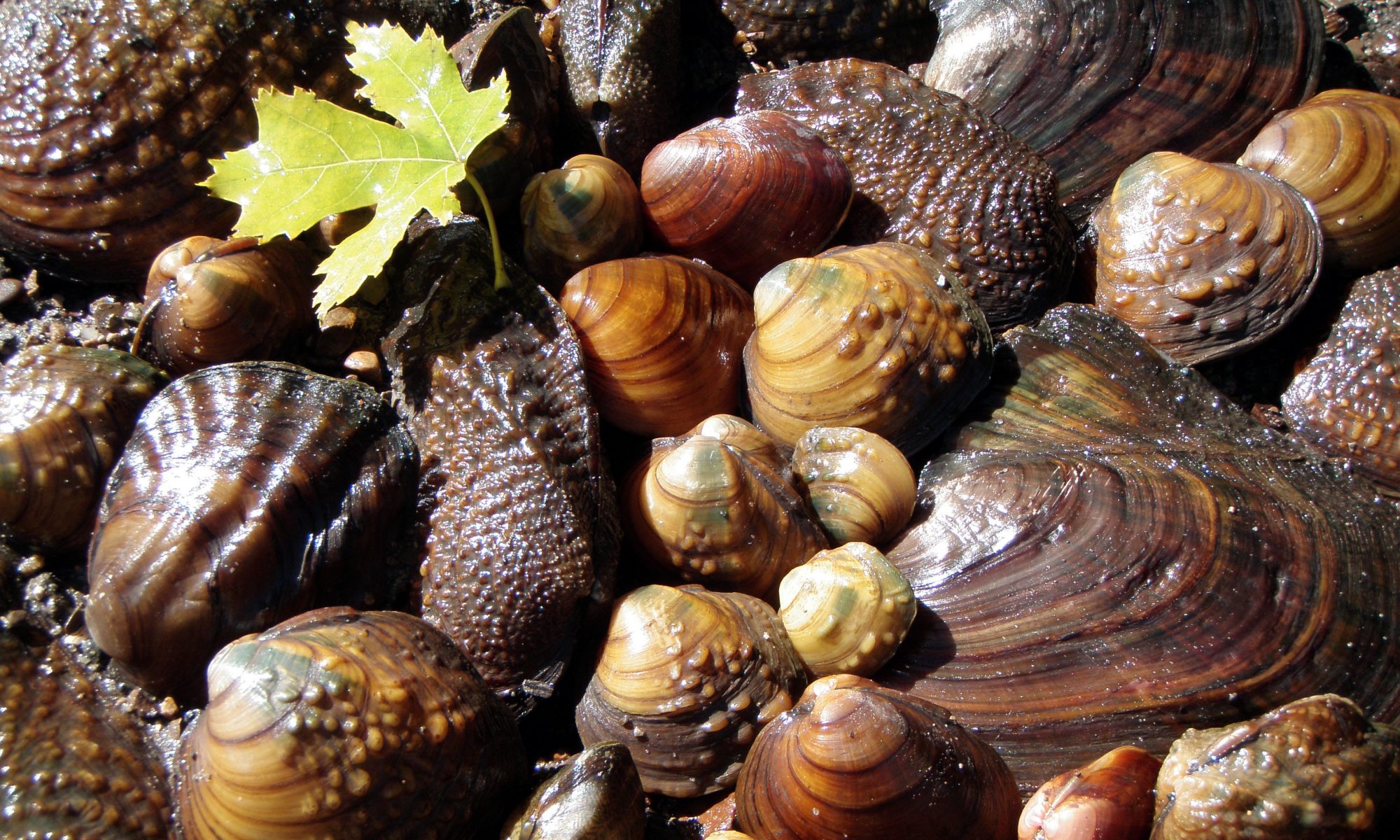Simpsonaias ambigua (Say, 1825)

Other common names: Simpson’s shell, smooth minishell.
Key characters: Small, thin, elliptical shell, poorly developed teeth, double-looped beak sculpture, rayless.
Similar species: Cylindrical papershell, spectaclecase, pondhorn
Description: Shell small, thin, elongate elliptical or oval, and compressed (male) to slightly inflated posteriorly (female). Anterior and posterior ends rounded. Posterior ridge rounded. Dorsal and ventral margins straight, parallel. Umbos slightly elevated above the hinge line. Beak sculpture of three or four double-looped bars. Shell smooth, dull, yellowish tan to dark brown, and rayless. Length to 2 inches (5.1 cm).

Pseudocardinal teeth very small, low, rounded; one in each valve. Lateral teeth absent. Beak cavity shallow. Nacre bluish white, occasionally tinged with salmon near the beaks, iridescent on the posterior half.
Habitat: Medium to large rivers on mud or gravel bars and under flat slabs or stones.
Status: Federal Candidate (Category 2). Endangered in Illinois, Michigan, and Missouri. Threatened in Wisconsin. Species of Special Concern in Indiana. Species of Special Interest in Ohio.

